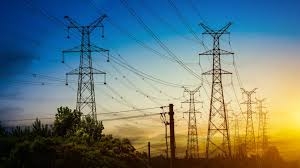
K’taka leads in clean energy transition, but shortfall hits hard
As Karnataka faces the summer months, there is an electricity deficit of 300 to 500 MW (75 – 125 million units or MU) during peak hours in some blocks of the state, according to data provided by the Energy Department.
Although the power situation in the state is largely stable now, the government is in the process of procuring electricity to bridge the deficit.
The peak demand for summer is expected to touch 18,000 MW this year, the Energy department has stated, as reported in The Hindu and the Indian Express.
Due to sub-normal rainfall in the state, the reservoir levels are very less, with very little by way of hydropower (only some pumped storage units are operational), leading to heavy dependence on thermal sources to meet the demand.
The state had earlier negotiated for swapping of power from Uttar Pradesh during the pre-solar and post-solar hours to an extent of 300 to 600 MW for the period from October 2023 to May 2024; this power is to be returned to Uttar Pradesh from June to September 2024.
A similar swapping arrangement was finalised with Punjab too for a quantum of 500 MW of Round-TheClock (RTC) power from November 2023 to May 2024.
The state is facing daily forced outages but it is due to technical glitches like overloading of power infrastructures, resulting in tripping of transmission lines, not due to power shortages, the Energy Department clarified, as there were numerous reports of outages across the state including capital Bengaluru.
It added that the generation rate at the thermal units of the state were 3250 MW/day or 75 MU /day. The daily electricity consumption in the state was 329 MU in March 2024, according to the state load dispatch centre figures.
On the brighter side, Karnataka along with Gujarat continue to lead the race to clean energy transition, according to a new report released by research organisation, Institute for Energy Economics and Financial Analysis (IEEFA), and clean energy think tank Ember.
The report launch coincides with a spell of intense heat wave sweeping parts of India, leading to the Ministry of Power preparing for a projected peak power demand of 260 Giga Watts(GW).
Harsh summers also offer the chance to utilise more clean energy like solar power. This requires the preparedness of states to transition to clean sources of electricity.
Cyclical weather conditions coupled with faster economic activity is pushing India’s peak electricity demand higher every year.
While the central government is taking steps to integrate more renewable energy into the grid, states, too, need to be prepared to do so, the report said.
Some states have developed progressive steps, such as boosting decentralised renewable energy deployment, promoting solar pumps for agricultural needs, and enhancing storage solutions to ensure more renewable energy in their electricity systems.
But, the transition to clean electricity is still in its infancy in many states, the report noted.
Each state faces unique challenges in decarbonising its power system, necessitating tailored policy interventions.
By tracking decarbonisation progress, assessing the power system’s readiness for transition, and monitoring the advancement of market enablers, state-specific challenges and potential interventions can be better understood, the report concluded.
 English daily published in Bengaluru, Doha
English daily published in Bengaluru, Doha

.jpg)
.jpg)

.jpg)
.jpg)
.jpg)
Comment